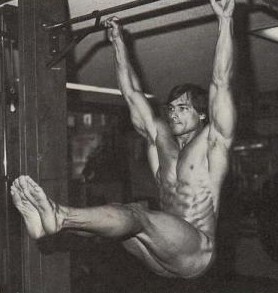
Click Here for Free Bodybuilding and Fitness Magazine Subscription
How Abs Function
Turn Your Body Into A Fat Burning Furnace With
New Ephedra Free Herbal Fat Melter
"Natural herbal extract burns fat faster and more effectively than many other products. You can be burning a tremendous amount of fat, while preserving your muscle tissue."
Special Limited Bonus Offer
When you order you will also get two FREE bonuses (valued at $40!)
Bonus #1 - Fat Loss Manual, an easy to follow fat loss guide that gives you a day-by-day plan to make sure you are burning the maximum amount of fat possible.
Bonus #2 - Fat Loss Food Chart, a durable hand-folding guide of food quantities and values to assist in simplifying daily meal preparations.
For full details go to https://www.trulyhuge.com/herbgen.htm
You can also order Fat Melter by calling 800-635-8970 or 503-648-1898, 10 am to 6 pm PST
Here's What You Need to Know About Your Abs Muscles to Build a Six Pack

Everyone from bodybuilders to mothers getting back in shape after pregnancy wants to build a shapely set of abs, but there is a lot of confusion over the best way to do that. Too many lifters spend too much time trying to build a six pack, and it usually comes down to a lack of understanding of how “abs” work.
Building a six pack involves developing a complex of muscles, but the actual process is fairly simple if you know the right exercises to choose. Before you can do that, though, you need to understand the function of your muscles.
To help with that mission, here is what you need to know about your abs in order to build a six pack.
Rectus Abdominis
What people usually refer to as “abs” is really the rectus abdominis. It’s a broad, thin muscle that originates in the pubic area and inserts on the rib cage. It’s crossed by several thin bands of connective tissue that give it its six-pack appearance, and it’s main function is to help you bend forward at the waist. It also provides abdominal pressure to stabilize your spine during lifts. Good exercises for the rectus abdominis include all kinds of crunching and sit-up movements.
Transverse Abdominis
The transverse abdominis lies deep under the other muscles of your abdomen and runs from your hip to your ribs. It wraps around your midsection and provides abdominal pressure for protection of internal structures. All types of compound movements work the transverse abdominis.
External Obliques
The external obliques run diagonally from your lower ribs to your pelvic bone, and they help you twist your trunk and flex it from side to side. The external obliques get plenty of stimulus from major moves and abs exercises most of the time, and overdeveloping them can make you look blocky. If you do want to target them directly, you can try side bends or broomstick twists.
Internal Obliques
The internal obliques lie under the externals and perform much the same function: twisting and flexing your torso. The internals also provide pressure for your abdominal cavity.
Armed with this knowledge, you can construct a simple routine to help build your six pack. Here are the general points to consider:
- Build your overall routine around big, basic exercises like squats, rows, and bench presses. This will nail all the muscles of your midsection, but especially the transverse abdominis and internal obliques.
- Add in a few exercises for your abs — maybe one or two for each your upper and lower abs — and train them progressively to build the thickness of your rectus abdominis.
- If your oblique development is lacking, try some side bends or broomstick twists.
Maybe the most important component of building a six pack is to keep your body fat well below 15% — more like 10-12% for best results — to show off your hard work.
When you consider the function of your abdominals and related muscles when making your routine, though, you can finally move away from the long, unproductive six pack routines that lead nowhere.
Want Even More Information About Building a Six Pack?
If you want to learn ALL about how to build a tight, ripped midsection, be sure to check out https://www.trulyhuge.com/the-incredible-shrinking-waist.html.

